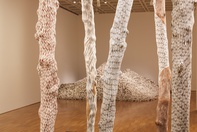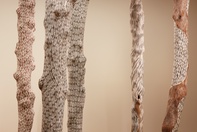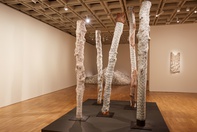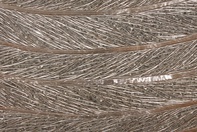Gunybi Ganambarr
Gängan, Northern Territory
2017
Displayed 2017 at Art Gallery of New South Wales
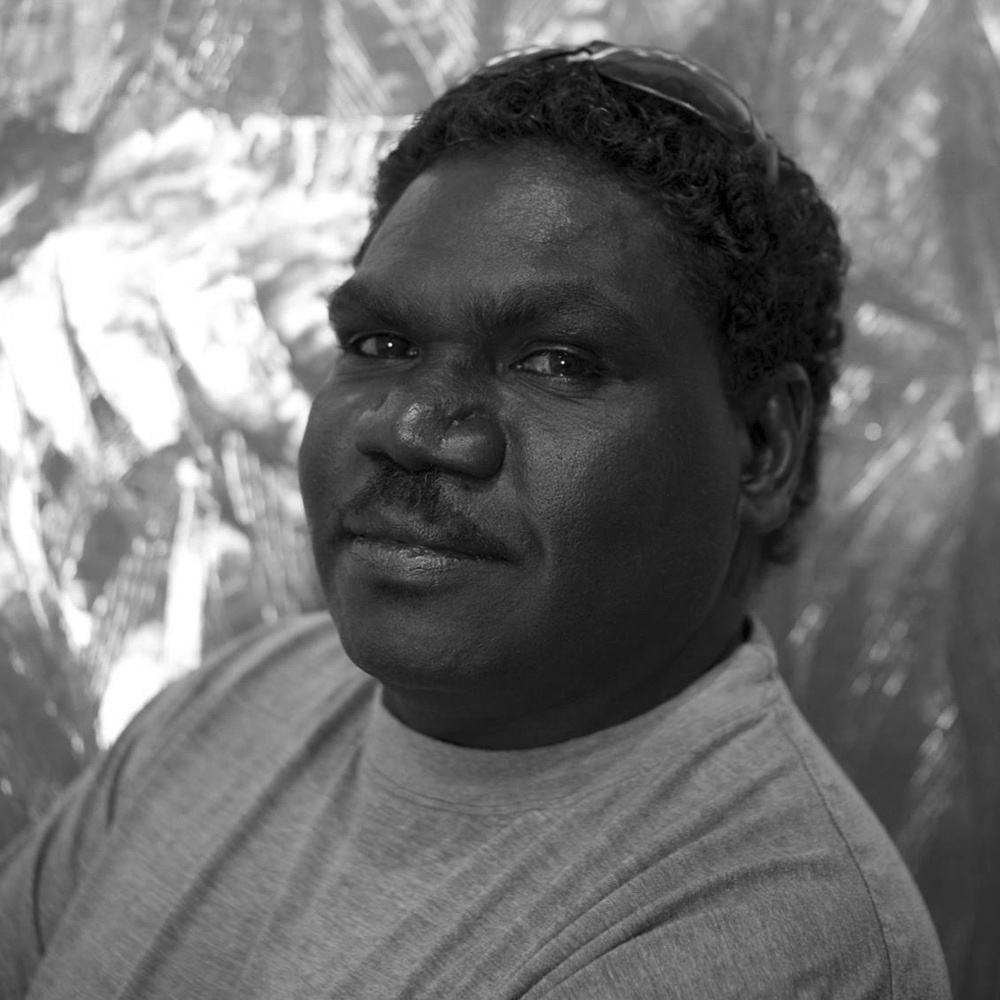
Gunybi Ganambarr
Born 1973, Miwatj, Northern Territory. Lives and works Gängan, Northern Territory
Ngaymil, Arnhem region
People ask me why I make work that is different. I usually say: ‘Ngarraku mulkurr – it’s from my mind’. These are ideas that come to me when I work at sharing my culture and law. It starts from our foundation. I went into Ngarra (restricted secret ceremonies) and that’s when I started to make art. Our djalkiri (foundation) is my beginning. Once I saw the foundation of Yirritja and Dhuwa law, and saw what was true and what was false, I began to learn more and more and now I have become an artist. So many different styles that I have found. I am trying to balance the two worlds; balancing the Yolngu knowledge with the Ngapaki technology. And now I feel that I have jumped up to my goal.
Artist text
by Cara Pinchbeck
Gunybi Ganambarr is a maverick. Never content to be restrained by convention, his work offers constant innovation and has redefined Yolngu art. Ganambarr is deeply respectful of protocols while expertly balancing his avant-garde approach with cultural obligation. At the heart of his practice is an exploration of Country; how it is owned, how it is shared and how it is utilised.
Ganambarr works in the small community of Gängan, several hours south of Yirrkala and home to perhaps the highest concentration of artists anywhere in Australia. (1) His experimental approach first came to attention in 2006 at the Young Guns exhibition at Annandale Galleries, Sydney, and he has since challenged expectations with his choice of materials – from conventional bark and wood to chicken wire, rubber, glass, roofing insulation and galvanised iron – and how he uses them. For Ganambarr, these discarded remnants from mining and building sites align with his art centre’s policy of only employing materials derived from the land, while poignantly commenting on the changes that are wrought on Country by their presence.
Mining has had a major impact in North-Eastern Arnhem Land and Ganambarr directly references the complexities of this in Gapu (2017) with an old conveyer belt, an object that has expediently transported the riches of Country away, intricately incised with clan designs. These detailed designs have been firmly attached to place since time immemorial and denote ownership of and responsibility for Country, rights that have been eroded as the surface of Country itself has been removed.
Ganambarr alerts us to the connection between Country and law in a very different manner in Buyku (2016), expertly wrapping the undulating form of a larrakitj (hollow log) with the diamond design for the waters around Gängan known as Gulutji. Barama emerged from the water at this location and established Yirritja law. (2) Since this time it has been an important meeting place shared by Yirritja clans for ceremony and social activities such as fishing. Ganambarr refers to this by rendering the diamond design in linear form to evoke the structure of a buyku (fish trap), which is made at Gulutji in the early dry season, or Midawarr.
From here the waters travel to Blue Mud Bay and Ganambarr provides a unique depiction of this location in Coastline of Grindall Bay (2016). Exemplifying Ganambarr’s experimentation within tradition, the top of this work has been cut away to provide an aerial view of the body of water detailed within the miny’tji (sacred clan design) that adorns the work. This angular design identifies the Dhalwangu saltwater estate of Garrapara, a location significant for the maintenance of clan relationships. It is the site of a Makarrata ground, with barbed spears stored in the casuarina trees should they be required in this orchestrated ceremony where disputing parties exchange spears and peace is achieved when the guilty party or their proxy has been injured.
This efficient form of dispute resolution seems particularly pertinent given the more recent struggles Yolngu people have undergone to achieve rights over their Country, with sea rights being granted at Blue Mud Bay in 2008, some 45 years after the process was first begun with the Yirrkala Bark Petition of 1963. Ganambarr reminds us of this history and the tenuous balance that remains as Yolngu law and Australian law intersect.
Notes
(1) There are only ten houses at Gängan and yet it is home to numerous esteemed artists, including Gawarrin Gumana, Malaluba Gumana, Djirrirra Wunungmurra, Garawan Wanambi, Nawurapu Wunungmurra and Gunybi Ganambarr, who have all won at least one major national art prize. Other well-known artists who live there are Yinimala Gumana, Lamangirra Gumana, Dhurrumuwuy Marika, Waturr Gumana, Djurrayun Murrinyina and Bandinga Gumana.
(2) Barama is the major ancestral figure for people of the Yirritja moiety in North-Eastern Arnhem Land.

